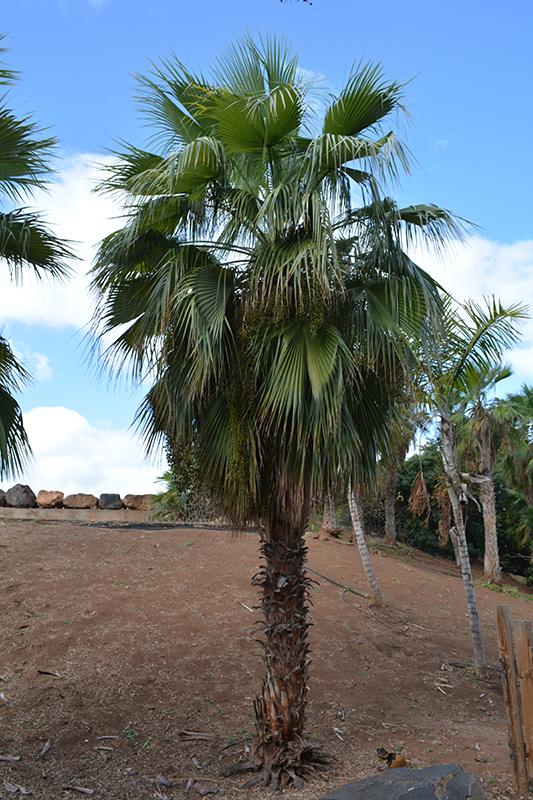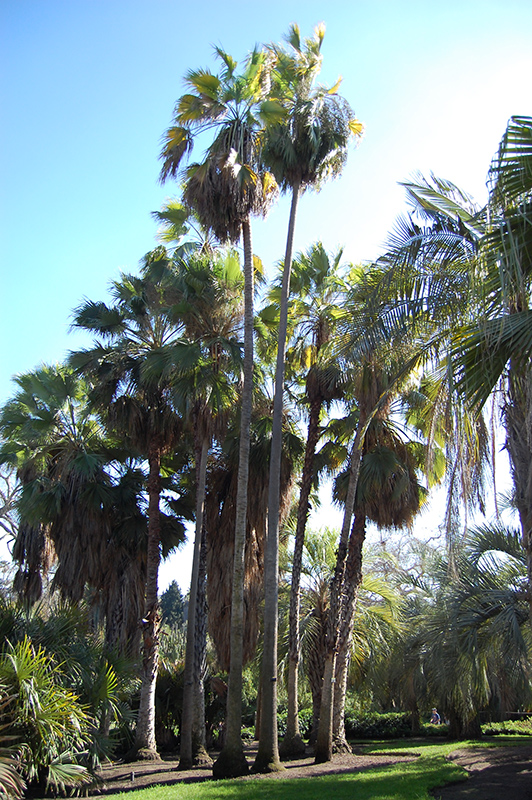Height: 60 feet
Spread: 15 feet
Sunlight:
![]()
Hardiness Zone: 9a
Other Names: Fan Palm
Description:
A magnificent, tall, slender, single trunked palm featuring large, fan shaped, light gray-green leaves that persist around the trunk, forming a skirt; adaptable, survives full inland sun and hot winds; a wonderful addition to the tropical landscape
Ornamental Features
San Jose Hesper Palm has attractive light green-variegated grayish green foliage with hints of silver on a tree with the bulk of the canopy held atop a towering trunk or stem. The large fan-shaped palmate leaves are highly ornamental and remain grayish green throughout the winter. It is draped in stunning clusters of creamy white flowers hanging below the branches from late winter to early spring. The lime green fruits which fade to dark brown over time are held in clusters from early to mid summer. The fruit can be messy if allowed to drop on the lawn or walkways, and may require occasional clean-up. The rough brown bark is extremely showy and adds significant winter interest.
Landscape Attributes
San Jose Hesper Palm is an open evergreen tree with a strong central leader and a towering form, with a high canopy of foliage concentrated at the top of the plant. Its relatively coarse texture can be used to stand it apart from other landscape plants with finer foliage.
This is a relatively low maintenance tree, and usually looks its best without pruning, although it will tolerate pruning. It has no significant negative characteristics.
San Jose Hesper Palm is recommended for the following landscape applications;
- Accent
- Vertical Accent
Planting & Growing
San Jose Hesper Palm will grow to be about 60 feet tall at maturity, with a spread of 15 feet. It has a high canopy of foliage that sits well above the ground, and should not be planted underneath power lines. As it matures, the lower branches of this tree can be strategically removed to create a high enough canopy to support unobstructed human traffic underneath. It grows at a fast rate, and under ideal conditions can be expected to live to a ripe old age of 150 years or more; think of this as a heritage tree for future generations!
This tree should only be grown in full sunlight. It is very adaptable to both dry and moist growing conditions, but will not tolerate any standing water. It is considered to be drought-tolerant, and thus makes an ideal choice for xeriscaping or the moisture-conserving landscape. It is not particular as to soil pH, but grows best in sandy soils, and is able to handle environmental salt. It is somewhat tolerant of urban pollution. This species is not originally from North America.



